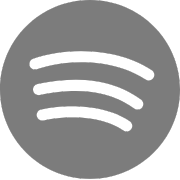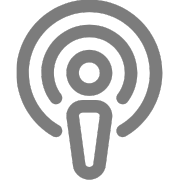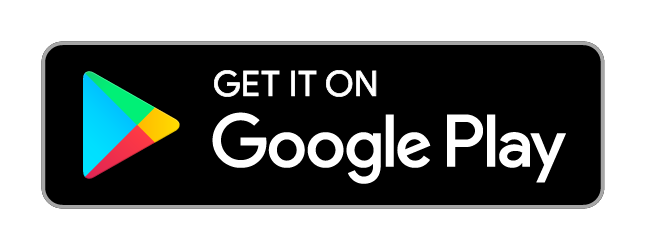- BDSM COMMUNITY Forum
-
KINKY MAP
Browse
- UK FETISH & BDSM SCENE
- BDSM and Kinksters in London
- BDSM and Kinksters in Manchester
- BDSM and Kinksters in Birmingham
- BDSM and Kinksters in Leeds
- BDSM and Kinksters in Glasgow
- BDSM and Kinksters in Liverpool
- BDSM and Kinksters in Bristol
- BDSM and Kinksters in Edinburgh
- BDSM and Kinksters in Nottingham
- USA FETISH & BDSM SCENE
- BDSM and Kinksters in New York
- BDSM and Kinksters in Chicago
- BDSM and Kinksters in Pretty Praire
- BDSM and Kinksters in Dallas
- BDSM and Kinksters in Los Angeles
- BDSM and Kinksters in Atlanta
- BDSM and Kinksters in Houston
- BDSM and Kinksters in Las Vegas
- BDSM and Kinksters in Miami
- FETISH & BDSM SCENE IN CANADA
- BDSM and Kinksters in Toronto
- BDSM and Kinksters in Montréal
- BDSM and Kinksters in Calgary
- BDSM and Kinksters in Edmonton
- BDSM and Kinksters in Vancouver
- BDSM and Kinksters in Winnipeg
- BDSM and Kinksters in Ottawa
- BDSM and Kinksters in London
- BDSM and Kinksters in North York
- FETISH CHAT Chat
Log in
Free registration
Sexual Orientations & Genders
- Fetish.com
- Kinks & Fetishes
- Sexual Orientations & Genders
Sexual Orientations & Genders
Traditionally, the term 'gay' refers to people who identify as men who date, sleep with and love only other people who also identify as men. Over the years, however, more and more people on the LGBT+ spectrum came to identify with the term; people of many gender identities and sexual orientations sometimes use it to describe themselves now. The controversy surrounding gayness has mostly to do with the fact that cis gay men are seen and portrayed very differently to many other LGBT+ people - and often wind up as the recipients of a huge amount of the acceptance, understanding, attention and publicity afforded to this group as a whole.
"There's nowt as queer as folk" is an often-used phrase in the north of England and means there's nothing as strange as people. This term stems from the 16th-century usage of the word meaning 'odd, peculiar or eccentric.' Some people think of the word 'queer' as an insult given its use in the later 19th and early 20th century. From the 1980s however, the term was reclaimed by those who want to undermine that insult and use the name to show their rebellious, non-gendered approach to homosexuality. The queer community is vibrant and growing day by day.
A transgender person identifies as a different gender to the one assigned to them at birth and is often described as being 'born with the wrong bits'. Unlike cisgender people, a trans person's journey to having the body they want can be long and complex. Some like to label themselves as trans women to show the journey they are on. They experience gender euphoria when their presentation matches the gender they are. It can happen when people use she/her pronouns for a trans woman and respect their chosen names. All trans women are women regardless of surgeries or hormone replacement therapies.
Transgender is a broad term that covers people who don't identify with the gender assigned at birth. Some need to identify both their gender and their journey; this is why some people use the label trans man. It not only states their gender, but it identifies them as part of the broader transgender community too. Trans men are as unique as any other person is, there is no defining feature at all. As with all things gender, it's all about how a person chooses to identify and label themselves, it's no one else's choice but your own.
For a long time, gender has been seen as a binary. Society is very fixed on the idea that there are two sexes, male and female, and nothing else is widely considered. However, this belief is changing as it becomes more and more evident that gender is indeed a spectrum, not just a binary. A growing number of people are identifying as genders that sit between the binary of male and female with a variety of labels available for people to identify with. Non-binary is an umbrella term for these folks. They may also identify as transgender but not necessarily so.
When we're born, we're assigned as a boy or a girl depending on what genitals we possess. Sometime later in life, we question this, and where some people find their way to different places on the gender spectrum, others are happy to stick with the label given at birth - this makes that person cisgender. It simplifies the conversation on gender and removes the rigidity of the gender binary that has existed for so long. Gender is an essential part of what makes you YOU, so it's great to have the language to express it to others.
We all know by now that gender is a spectrum, and nothing about it is binary or black and white. What some people don't yet know is that the same is true of so-called "biological sex". Estimates vary, but scientists think that as many as one in fifty births could be of people classed as 'intersex': of indeterminate sex in some way or another. Traditionally, if this manifests itself in a baby's genital configuration (it doesn't always; some intersex people have ambiguous hormones and/or chromosomes without visibly unusual genitals), so-called "corrective" surgery is performed right away so that the baby can be (often arbitrarily) assigned a gender. People struggle to wrap their heads around the idea that a human might genuinely not "really" be either binary sex, but increasingly the intersex community is campaigning for an end to these surgeries and assignations to give them a chance to make their own choices.
There's a common misconception that the word 'bisexual' means 'someone who is attracted to the two binary genders', but this isn't really the case; generally, the word means (and is used to mean) 'attracted to people of my gender and people not of my gender'. As such, it can have broadly the same meaning as 'pansexual' - and the two terms are increasingly often used interchangeably by people to whom both can apply. Whichever you prefer, it's absolutely vital to remember that bisexuals aren't on the fence, waiting to choose or 50/50 - they're simply capable of being attracted to people of all and any genders.
Like all of the words people use to describe their identities, different people use the term 'lesbian' in different ways -but it's pretty much universal that lesbians identify as women, and have relationships only with other people who also do. Lesbians are, therefore 'monosexual', which means 'attracted to only one gender'. Not all women who are only attracted to women describe themselves as being lesbians, though - some prefer to use 'gay', 'queer' or other terms, for either personal or political reasons. It's always a good idea to ask someone how they self-identify before assuming, no matter how obvious you think they're supposed identity is.
Sexuality is a spectrum, and there's more than one way of being straight. It's true that people who identify this way are in general attracted only to people of a different gender to them - but that can cover a lot of bases! There are more than two genders, after all; there are people who identify as straight who are attracted to others of any gender other than their own. Some straight people are attracted primarily to gender identity, and have relationships with trans partners, while other may find that they seem only to be attracted to cisgendered people. Not even 'straight' is a cut and dried sexuality - never forget that humans are complex, and so therefore are the words they use to describe themselves!
Asexuals (or Ace's) are perhaps the least understood or discussed of all sexualities. Asexuality refers to people who do not, to a greater or lesser extent, experience sexual attraction to other people. Sexual attraction is not the same thing as sexual desire or libido, and attitudes towards sex among asexuals varies widely; from sex-averse asexuals who do not like or engage in sex, to sex-favourable asexuals for whom the lack of sexual attraction may have little impact on an active (even kinky) sex life, and everything between. The asexual spectrum also includes a variety of identities, including (but not limited to) Demisexuals who may become sexually attracted to people to whom they are emotionally close, Grey Asexuals who may experience sexual attraction but only rarely or to a lesser degree, Cupiosexuals who may still desire a relationship despite the lack of attraction, and more.
Aromantics (Aro's) are a separate identity based on lack of romantic attraction but with a similar variety of attitudes and orientations - many people identify as both Ace and Aro but the two identities are independent of one another. The core identities of Asexual and Aromantic relate to the absence of one or other form of attraction, with variations on the spectrum recognising more specific experiences and attitudes.
Copy subbed by Non-Vanilla Aces - A group for any and all people on the asexual spectrum.
Being pansexual has nothing to do with a sexual attraction to pans (but if that's your fetish, go you!) and it's best not to crack this tired joke when speaking to someone about being pansexual. It's a label some people choose because they don't see gender when they're attracted to a person. Sometimes this is referred to as being gender blind. Pansexual comes from the Greek prefix for all 'Pan', and sometimes people will say omnisexual, which means the same thing, but the prefix comes from the Latin instead. Being free to love regardless of gender is what being pansexual is all about!
While not really a kink, the androgynous look is one that many people find attractive. It's not always necessarily associated with people who are genderqueer or non-binary, though it certainly can be for some people: the term refers to a look that combines aspects of different genders and may well be difficult to pin down. Some people feel most comfortable when dressed this way, while others are primarily attracted to those who look at least a little androgynous; either way, it's an aesthetic choice rather than one that denotes gender identity or sexual orientation. Enjoy your style, explore your preferences and have fun being you!
- Fetish.com
- Popular Searches
- Spread The Kink
-






Spank U, Next - A FETISH & BDSM PODCAST


© 2015 - 2025 FETISH.com - Kink-positive BDSM community for fetish dating with free chat for kinksters.
DID YOU KNOW?
One in three have a fetish. Unleash your true self and dive into your kinky life in Franklin!
One in three have a fetish. Unleash your true self and dive into your kinky life in Franklin!
One in three have a fetish. Unleash your true self and dive into your kinky life in Franklin!
One in three have a fetish. Unleash your true self and dive into your kinky life in Franklin!
One in three have a fetish. Unleash your true self and dive into your kinky life in Franklin!

